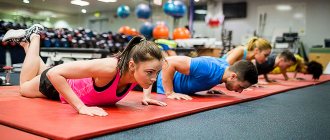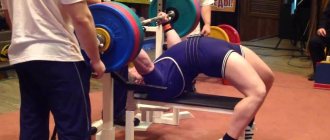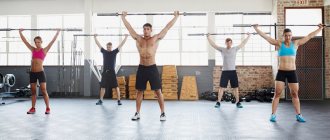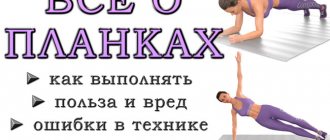Every day, exercise in the gym is gaining more and more popularity among those who want to keep their body in shape all year round. Longtime supporters of a healthy lifestyle have already tried all sorts of training formats and were able to choose one thing: personal classes with a trainer or group trainings. But it’s not easy for beginners in this business. Is it worth overpaying for a personal coach? Will it be comfortable to train with a whole group? Or maybe try to get used to the gym on your own? We answer all these questions together with the “Championship” expert, wellness coach Andrey Semeshov
.
Personal training
Of course, if you have never played sports in your life or at least not kept fit with regular walks in the fresh air, you may need help while training in the gym. The first thing that comes to mind is training with a personal trainer.
pros
- Individual training plan: all loads will be tailored to your physical abilities.
- High efficiency: a competent trainer will monitor the correct execution of exercises in order to achieve maximum results.
- Low chance of injury: the trainer will supervise you during the exercises.
- Constant motivation: a professional coach will always find the right words to support you during a difficult workout.
- Personal schedule: you can always adjust your training schedule and come to the gym when it suits you.
Photo: istockphoto.com
Minuses
- High cost: on average, one lesson with a trainer costs 2-2.5 thousand rubles.
- Incompetent trainer: You may get an unprofessional who will do more harm to your physical fitness than good.
- Lack of like-minded people: you are alone in achieving your goal, so very soon the gym may become boring.
What will happen to your body if you do a shoulder bridge every day?
Preparation of a program by a trainer
It’s worth understanding this issue, at least in order to understand how to distinguish a knowledgeable person from someone who just wants easy money.
Most people dream of slimness and beauty of their own body, but, as often happens, they do not want to make any effort for this. Meanwhile, without perseverance and hard work nothing can be achieved. For such lazy beginners, trainers create a personal training program. Usually this is a standard set of exercises that are only adjusted to the characteristics of a particular person.
This mainly applies to personal fitness training. So, for a thin guy, the trainer will add more repetitions to the standard program and reduce the number of approaches, and for an obese guy he will focus on cardio training.
You should not be afraid of this method, because before creating personal training in fitness or another sport, the coach must understand the capabilities of the beginner. Therefore, first a person works through a general program and only then begins to work on an individual one.
But here there are several important points. One of these is the qualifications of the person who is the coach. For example, if a person comes to the gym to lose weight, then he should not reduce the number of approaches. If this is exactly what the coach says to do, then he cannot be called a qualified specialist; it is better to choose another mentor.
Group classes
An equally popular format for training is group training. In modern fitness clubs, several separate rooms are allocated at once in order to conduct scheduled classes there. Together with the group, you can attend stretching, yoga, Pilates, dancing, aerobics and many other fitness programs.
pros
- All fitness levels are welcome, from beginner to experienced athlete, there is something for everyone in group classes.
- Total immersion: you give yourself completely to the training, as during a group class there is no one or anything to distract you.
- Increased efficiency through competition: you constantly monitor other group training participants and motivate yourself to be better than them.
- Wide range of options: you can always find a fitness program to your liking.
Photo: istockphoto.com
Minuses
- Reduced attention of the trainer: usually there are from 20 to 30 people present at the lesson, so the trainer will not physically be able to pay attention to everyone.
- Strict class schedule: you won't be able to reschedule your workout if you need to.
- High risk of injury or ineffective training: the coach does not have time to keep track of everyone.
Rest between sets and training time
Personal training in the gym, as well as group training, should not exceed sixty minutes in duration. This doesn't just apply to people who use AAS.
This time is due to the fact that the activity itself is stressful for the body, and after an hour of active training, the body begins to produce cortisol. This hormone destroys muscles, and with other catabolic hormones it does harm.
For this reason, you need to choose a training program that does not exceed sixty minutes in duration. In addition, long-term training delays the production of the above hormones, which, in turn, slows down the release of anabolic hormones. This is fraught with an increase in the recovery period.
It is advisable to rest no more than one and a half minutes between approaches. It is with such rest that it will be possible to perform more exercises, and the training will be more beneficial.
That is, a well-designed program will be one in which one hundred and twenty seconds are allocated for one approach. Thanks to this program, you can do about forty approaches during the entire session.
Is it possible to work out in the gym on your own?
There is no correct answer to this question. After all, if you have been working with a personal trainer for a long time or attend weekly group classes and have learned almost the entire range of proposed exercises, you can safely try to switch to independent training. But if you are a beginner and are unfamiliar with most of the machines in the gym, then practicing on your own can be dangerous.
Andrey:
First of all, independent training carries the risk of injury. Incorrect technique, especially in exercises with free weights (dumbbells, barbells), can lead to unpleasant consequences - pinching, sprains. Working in simulators partially removes these risks. The second point is the danger... of not getting the desired result. Incorrectly calculated loads or the number of approaches/repetitions can slow down progress, or even completely eliminate it. That is, you regularly go to the gym, move from one machine to another, push/pull/lift something, but this does not affect your appearance in any way. And even the working weights are always the same. But I’m not at all trying to convince everyone that without a personal trainer, on your own, there’s no point in going to the gym. Of course this is not true. This is not some kind of super-wisdom that is available only to a select few. Everything is quite simple, but you need to prepare to understand the basic principles a little. Watch videos, read a couple of articles. In general, take your time. Or money to pay for the services of a personal trainer. Depending on what you have more of.
Photo: istockphoto.com
How to start practicing
First you need to determine the appropriate training method and find an experienced trainer. Before you begin the exercises, you will need to develop and agree on an individual training program.
This is what a personal trainer does. He will definitely discuss the following details with you:
- key features of the training program;
- schedule and intensity of training, taking into account health status and goals;
- your personal wishes and questions.
The program must be clearly balanced and adapted to the individual characteristics of the client.
Fitness trainer, who is he?
Trainers develop fitness programs and monitor implementation. The level of athletes’ loads is varied and different training methods are used.
The instructors make the classes interesting but effective. They do not achieve sporting achievements or records. The main thing is for a person to get in good physical shape and become healthier in body and spirit.
People come with specific goals, and a specialist helps them achieve them.
- A person wants to build muscle. The mentor evaluates the client's form. For some, he offers strength exercises with barbells and dumbbells. For others, he recommends using your own weight without additional loads. These are pull-ups, squats, presses, bends.
- Trainers train clients in aerobics: classical, stepaerobics, and water aerobics. This type of sports exercise works the muscles and pumps up the muscle corset.
- Use other types of physical activity to improve your figure. For example, shaping, which helps to lose excess weight.
- Pilates, fitball, stretching, and flex work to stretch muscles and develop body flexibility. Yoga and Latin dancing - a fitness trainer does all this.
Beginners who visit the gym for the first time have a question: should they hire a personal trainer?
Exercise order
In order for the training to be beneficial, you need to adhere to two rules during its construction:
- First of all, train the large muscles, and then the small ones.
- First, perform basic heavy exercises, and then isolate ones.
To understand how this works in practice, consider an example of training the pectoral muscles. It is advisable to start training with barbell bench presses in a lying position and only then add dumbbell presses and so on. This order follows the rules: heavy first, then light.
Personal trainer: “The slower we lose weight, the more stable the result”
– With the onset of spring, various articles appeared on social networks on how to lose weight by summer. New clients are coming to gyms. In your opinion, is it possible to achieve results in three months and in what case will it not be stressful for the body?
“You can achieve results in three months.” But a lot depends on whether a person has ever played sports or is a beginner. It will be easier for those who already have sports experience. Two to three weeks will be enough for a person to get into the groove of sports and see the first results.
For beginners, the adaptation period lasts from 3 to 6 months for girls and up to 3 months for boys. This is the time when there may be no result at all. This becomes a problem for many beginners: they don’t see a quick effect, give up and leave.
Much depends on how many times a week a person exercises and how he eats. If the diet is not balanced, the training will have an effect, but most likely not as quickly as we would like.
And of course, we are not talking about maximum results. You won't reach your goal in three months. But people will see changes.
– Let’s imagine a situation where a person comes to the gym for the first time. Does he have to work with a trainer or can he do it on his own?
– If it’s your first time, then a coach is required. There is a danger that if a person exercises on his own, he may cause harm to himself: he may get a sprain, a dislocation, or he may start without warming up. Therefore, at least one or two training sessions with a trainer, if finances do not allow you to do it all the time, you need to take it.
There is a category of people who come to a trainer not so that he can show them how to do exercises correctly, but because they lack willpower. You need to stand over them and say “do.” Otherwise they will just walk around the hall. They must be forced, although they themselves do everything quite correctly and accurately.
– How to choose a good coach? What should you pay attention to: his appearance, should you be interested in his education?
– The first thing you can do when you arrive at the gym is make eye contact. Think about which coach inspires a feeling of trust.
External data can be assessed. Everyone has their own ideal figure. As a rule, the client chooses a coach whom he wants to emulate. If there are no preferences in appearance, then I would recommend paying attention to the coach’s sporting achievements, asking what educational courses and seminars he attended.
During the training process, you also need to look at how comfortable you are with the coach. There is a category of clients who come and say that they need to be yelled at. There are those who ask you to speak in a calm tone and to be loyal to them.
– Can a coach have a “swimming” figure?
- Yes. I won’t say that I support such a policy, but I know a number of examples. The reasons may be different. Perhaps the person has health problems, hormonal imbalance. Perhaps he decided for himself that sports were in the background. But he has a rich theoretical background, and he can work. Pay attention, for example, to boxing. There are a lot of full trainers out there. But they have experience.
– How many times a week is optimal to go to the gym?
– There is sport as health, sport as beauty (we are talking about either losing weight or building muscle mass) and professional sport. Professionals train six times a week. For health, 2-3 workouts a week are enough to “make” a figure - 3-4. In general, there is no such thing as too much sports.
– Is it possible to lose weight in certain parts of the body? For example, a girl does not want to lose weight in her chest, but she wants to lose weight in her waist and hips.
- No. Unfortunately, our body cannot lose weight locally. We can’t do anything about it, everything is given by nature. Someone begins to lose weight where they need to. Someone is unlucky: his problem area may be the last one where he will lose weight. The body has an emergency reserve, which it reserves for emergencies.
– Is it possible to pump up muscles locally?
- Yes, this makes everything easier. We can pump up a specific place.
– Probably, you can meet young girls and boys more often in the hall. But let’s imagine a situation where a person decides to take up sports after 50 years. What do such people need to know?
– There are a lot of older clients. This is a category of people who do not want to do something perfect with their figure. But they want to adhere to a healthy lifestyle. In this case, stretching exercises with light weights will be useful. Under no circumstances should you work with exorbitant weights, because joints and ligaments are not ready for such loads. I would recommend working with a trainer, because such people are more susceptible to injury.
– Is it true that if you only do strength training, you won’t lose weight?
– Cardio training is more suitable for weight loss. But power loads also have an effect. Before cardio exercise, it is better to do strength training to burn off carbohydrate energy reserves. If we come to the gym and immediately get on the cardio machine, then for 20-30 minutes we will simply burn the carbohydrate reserves that we ate during the day. We won't get to the fat. If you combine cardio and strength training, you will get to fat faster.
– What is healthier – running on a treadmill or outside?
- On the street. It’s just better to run not near the roadway, but in a forested area. It is believed that running on a treadmill is easier because you are not pushing the ground, but the ground is pushing you. Therefore, I would prefer running outside. In addition, the picture before your eyes is constantly changing. This distracts from the actual running.
“Sometimes they say, “I’ll eat a piece of cake, but I’ll still go to the gym in an hour and work it out.” In your opinion, is it possible to do this? And what basic nutritional rules should you follow?
- Of course you can. For example, on February 23, the management gave us a beautiful, delicious cake. Sticking to the diet, I still ate a piece and went to train. Maybe the training was unplanned, but it had to be done.
Nutrition is 70% of the result. Many people come, give their all in training, but cannot deny themselves delicious food. I don’t condemn this, because our life is not sweet anyway. But you need to stick to the system. For example, make yourself a holiday on Sunday when you can eat something sweet. But not every day. Otherwise, the training will not be effective.
There is a stereotype that you can’t eat after six. But this is just a stereotype. Some people work until the evening and come home only at 9. I forbid my clients to eat 2-3 hours before they lie down on the sofa, read the newspaper, or watch TV. The energy will have nowhere to go. And the entire carbohydrate reserve will be deposited where it is not needed.
I recommend eating 1.5 – 2 hours before training. And of course, if you ate something sweet or fatty, then it’s better to work it off.
– How long does it take on average for a girl to build a beautiful body contour, provided she is not overweight? What about the man?
– To answer this question, you need to see a person: what kind of sports training he has, what he eats. Sometimes the first result can be noticed after a month, the body will become more toned. But if we talk about the relief, then the time frame definitely increases. Healthy natural muscle gain is about 3-4 kg per year.
If we are talking about healthy weight loss, then you can lose up to 3 kg per month. Anything faster puts stress on the liver and the body as a whole. You can lose 8 kg in a month. But this is very dangerous: you can disrupt your hormonal levels. Therefore, the slower we lose weight, the more stable the result.
– How do you feel about the use of various doping agents and pharmacology?
– Additives are different. There are harmful ones, and there are those that are sold in pharmacies. This is a very big topic. But I am against pharmacology and never promote it.
It happens that a girl comes and says “I want to quickly pump up my butt, in three months.” I answer that this can be done quickly, but you will have to turn to sports nutrition. But as soon as you stop using it, the result that was obtained thanks to the same sports nutrition will disappear. If you rely on your own strength, you will get a more or less permanent and stable result.
– How do you feel about selfies in the hall?
– I recently read on the Internet the phrase “in my time, after a good approach, we went to the toilet to puke, and did not take pictures in the mirror.”
But in general I have nothing against it. A selfie is an advertisement for the gym and promotion of sports, which is good. Another question is that there are girls who come just to take pictures. Some people try to take pictures of themselves on the exercise machine, sometimes this is dangerous. And so, even coaches advertise themselves through photographs.
Photo:
Rate the article
Our channel on Telegram. Join us!
Do you have anything to talk about? Write to our Telegram bot. It's anonymous and fast
Subscribe to our news on Google
Antagonists
Regardless of how the training program is scheduled: 3 times a week or more often, it is important to understand what processes occur in the body during exercise. To do this, you need to know about such a thing as antagonist muscles. These are those muscle groups that have opposite functions. A striking example is the comparison of the back and chest. If the first muscles pull the arms back, then the pectoral muscles, on the contrary, pull them forward. The same goes for the triceps. He bends the arm at the elbow, and the biceps works during extension.
This information is needed in order to choose the right exercises and work them out effectively. After all, even if, for example, the exercise is for the pectoral muscles, the back is still involved, although it performs the opposite functions. Thus, the restoration of those muscles that are antagonists occurs. That is, if you combine training of antagonist muscles in one session, then blood flows into them and the effect of bloated muscles is obtained.
Selection of exercises
A personal trainer creates a training program according to the client’s needs. But you can also choose exercises to suit your needs. For example, in order to increase muscle size, basic exercises will be enough. Absolutely everything with dumbbells and barbells is suitable. To work out muscles, you also do not need simulators or isolated exercises, because they do not affect muscle growth in any way. For beginners, the best option would be:
- Leg press in a lying position.
- Squats.
- Pull-ups.
- Bent-over barbell row.
- Bench press in a lying position.
- Dumbbell press (one arm).
- Close grip barbell press.
- Seated dumbbell press.
- Dips.
- Pulling the barbell to the chin.
- Biceps curl.
It is thanks to these exercises that muscles grow. If a person’s goal is to build muscle mass, then exercises like this are what you need. But you need to be more careful with exercise machines, because they are not suitable for building mass.
How many times to repeat
When a person wants to build muscle, he should do six to twelve repetitions in one set. But you shouldn’t get hung up on these numbers; they are still not of paramount importance. It is more important to correctly determine the time during which the muscle is under stress. This means that muscle failure occurs in about thirty seconds. Do not be afraid of this, since this phenomenon is the norm.
And again we return to the fact that muscle failure occurs between six and twelve repetitions - in the case of training a large muscle, and between fifteen and twenty repetitions - for a small muscle.
In short, the smaller the muscle's range of motion, the more repetitions it will take to fail.











